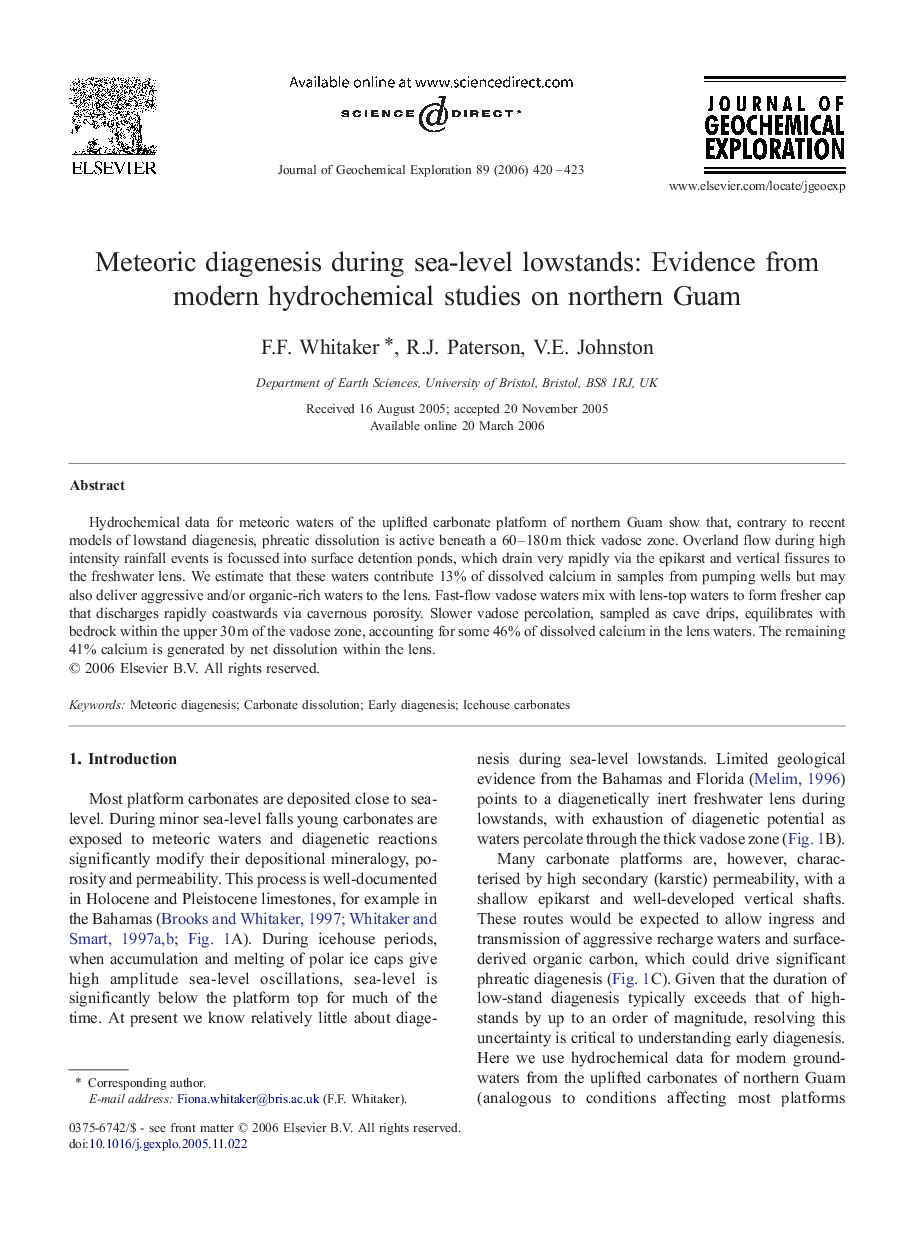| Article ID | Journal | Published Year | Pages | File Type |
|---|---|---|---|---|
| 4458502 | Journal of Geochemical Exploration | 2006 | 4 Pages |
Hydrochemical data for meteoric waters of the uplifted carbonate platform of northern Guam show that, contrary to recent models of lowstand diagenesis, phreatic dissolution is active beneath a 60–180 m thick vadose zone. Overland flow during high intensity rainfall events is focussed into surface detention ponds, which drain very rapidly via the epikarst and vertical fissures to the freshwater lens. We estimate that these waters contribute 13% of dissolved calcium in samples from pumping wells but may also deliver aggressive and/or organic-rich waters to the lens. Fast-flow vadose waters mix with lens-top waters to form fresher cap that discharges rapidly coastwards via cavernous porosity. Slower vadose percolation, sampled as cave drips, equilibrates with bedrock within the upper 30 m of the vadose zone, accounting for some 46% of dissolved calcium in the lens waters. The remaining 41% calcium is generated by net dissolution within the lens.
